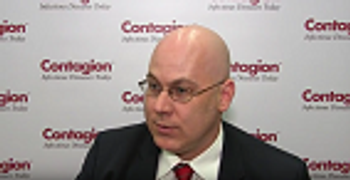
Kirk Hevener, PharmD, PhD, assistant professor of Biomedical and Pharmaceutical Sciences at Idaho State University, College of Pharmacy, explains his research regarding topoisomerase I and II enzymes.

Kirk Hevener, PharmD, PhD, assistant professor of Biomedical and Pharmaceutical Sciences at Idaho State University, College of Pharmacy, explains his research regarding topoisomerase I and II enzymes.

Kirk Hevener, PharmD, PhD, assistant professor of Biomedical and Pharmaceutical Sciences at Idaho State University, College of Pharmacy, discusses the advantages of narrow spectrum antibiotics.

Kirk Hevener, PharmD, PhD, assistant professor of Biomedical and Pharmaceutical Sciences at Idaho State University, College of Pharmacy, explains how clinicians can identify pathogenic organisms to determine which narrow spectrum antibiotic to use for treatment.

Justin R. Anderson, PhD, associate professor of biology at Radford University, explains the factors that make some people more susceptible to contracting mosquito-borne viruses.

Justin R. Anderson, PhD, associate professor of biology at Radford University, discusses what factors will aid mosquito control specialists in eradicating vector populations.

Justin R. Anderson, PhD, associate professor of biology at Radford University, discusses how endocrine disrupting chemicals interact with larvae to change infected mosquitoes.

Kirk Hevener, PharmD, PhD, assistant professor of Biomedical and Pharmaceutical Sciences at Idaho State University, College of Pharmacy, explains the difference between topoisomerase I and quinolone antibacterials.

Craig Rubens, MD, PhD, co-founder and executive director of GAPPS at Seattle Children’s Hospital, discusses the goals of the Global Alliance to Prevent Prematurity and Stillbirth (GAPPS).

Craig Rubens, MD, PhD, co-founder and executive director of GAPPS at Seattle Children’s Hospital, discusses the need for more research on neonatal infections.

Craig Rubens, MD, PhD, co-founder and executive director of GAPPS at Seattle Children’s Hospital, discusses the importance of understanding the global burden of neonatal death and disease.

Romney Humphries, PhD, D(ABMM), section chief of Clinical Microbiology at the University of California, Los Angeles, discusses how stewardship recommendations can drive change in how physicians manage their patients.

Romney Humphries, PhD, D(ABMM), section chief of Clinical Microbiology at the University of California, Los Angeles, discusses the importance of minimizing the gap between clinical trial data and real world outcomes.

Otto Schwake, PhD, Department of Civil and Environmental Engineering at Virginia Tech, lead researcher from the Flint Water Study team, explains how metals affect the growth of Legionella.

Romney Humphries, PhD, D(ABMM), section chief of Clinical Microbiology at the University of California, Los Angeles, discusses the two approaches used to detect antimicrobial susceptibility: genotypic and phenotypic.
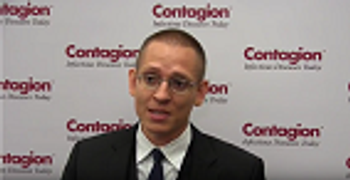
Otto Schwake, PhD, Department of Civil and Environmental Engineering at Virginia Tech, lead researcher from the Flint Water Study team, explains the danger Legionella poses.

Otto Schwake, PhD, Department of Civil and Environmental Engineering at Virginia Tech, lead researcher from the Flint Water Study team, explains how the material of water pipes can have public health implications.
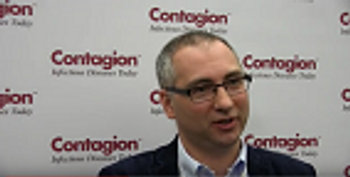
Andrea Endimiani, MD, PhD, professor at the Institute for Infectious Diseases at the University of Bern, Switzerland, discusses how antibiotic stewardship can reduce the risk of antimicrobial-resistant superbugs.
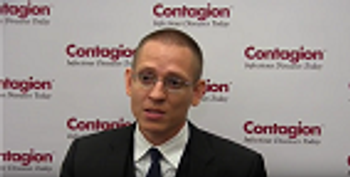
Otto Schwake, PhD, Department of Civil and Environmental Engineering at Virginia Tech, lead researcher from the Flint Water Study team, explains why in Flint, Michigan, Legionella prevalence differed based on building size
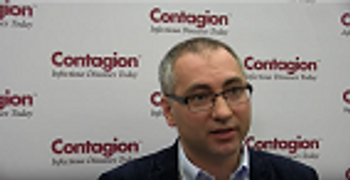
Andrea Endimiani, MD, PhD, professor at the Institute for Infectious Diseases at the University of Bern, Switzerland, discusses how scientists can neutralize the mcr-1 gene.

Pedro Fernando da Costa Vasconcelos, MD, PhD, director of WHO Collaborating Center for Arbovirus and Research, Evandro Chagas Institute, explains how the Zika virus affects fetuses of infected pregnant women.

Justin R. Anderson, PhD, associate professor of biology at Radford University, describes his research on the effects of endocrine disrupting chemicals on mosquito-borne viruses.
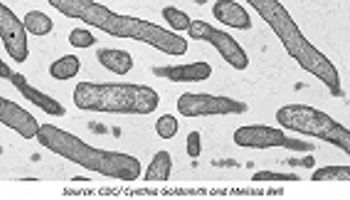
During a session at the ASM Microbe 2016 conference on Monday, June 20, 2016, a Centers for Disease Control and Prevention officer presented data on the investigation of the Elizabethkingia anophelis outbreak that started in Wisconsin and spread to two other states.

A therapeutic vaccine for genital herpes has the potential to reduce viral activity as well as decrease the number of days of recurrent herpes, as observed in a phase II clinical trial.
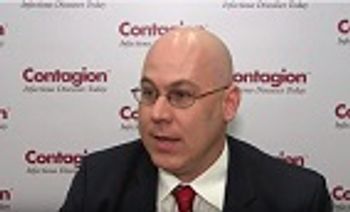
Kirk Hevener, PharmD, PhD, explains the importance of narrow-spectrum antibacterial targets.

Romney Humphries, PhD, D(ABMM), discusses new technologies to detect antimicrobial susceptibility and resistance that are currently under production.

Craig Rubens, MD, PhD, co-founder and executive director of GAPPS at Seattle Children’s Hospital, describes the current disease burden of neonatal infections across the globe.
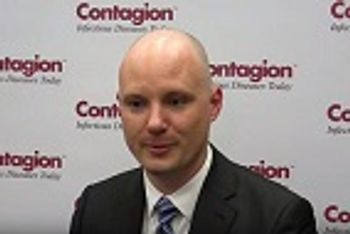
Andrew Chasteen from Accelerate Diagnostics, Inc, explains Morphokinetic Cellular Analysis (MCA) and how it differs from other analyses.
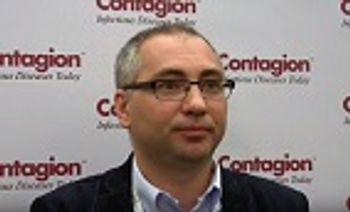
Prof. Andrea Endimiani, MD, PhD, from the Institute of Infectious Diseases at the University of Bern, Switzerland, explains which pathogens are most affected by the colistin resistant mcr-1 gene.
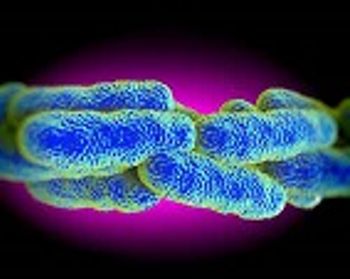
Research conducted by the Flint Water Study team at Virginia Tech revealed that DNA marker levels for Legionella in the city’s water supply has decreased since October 2015.